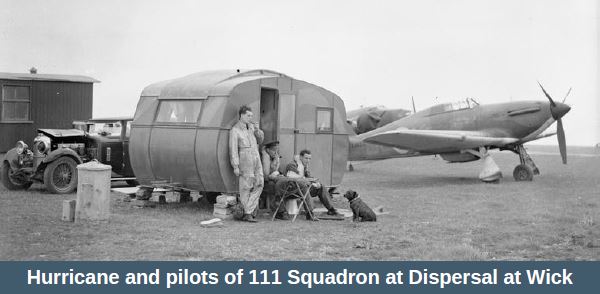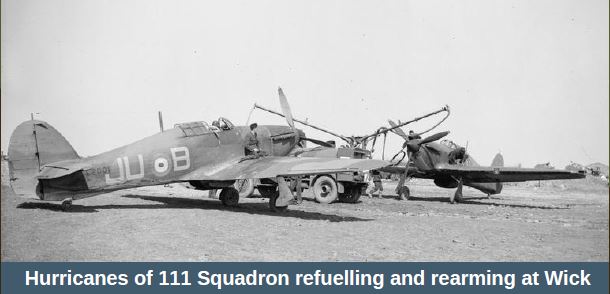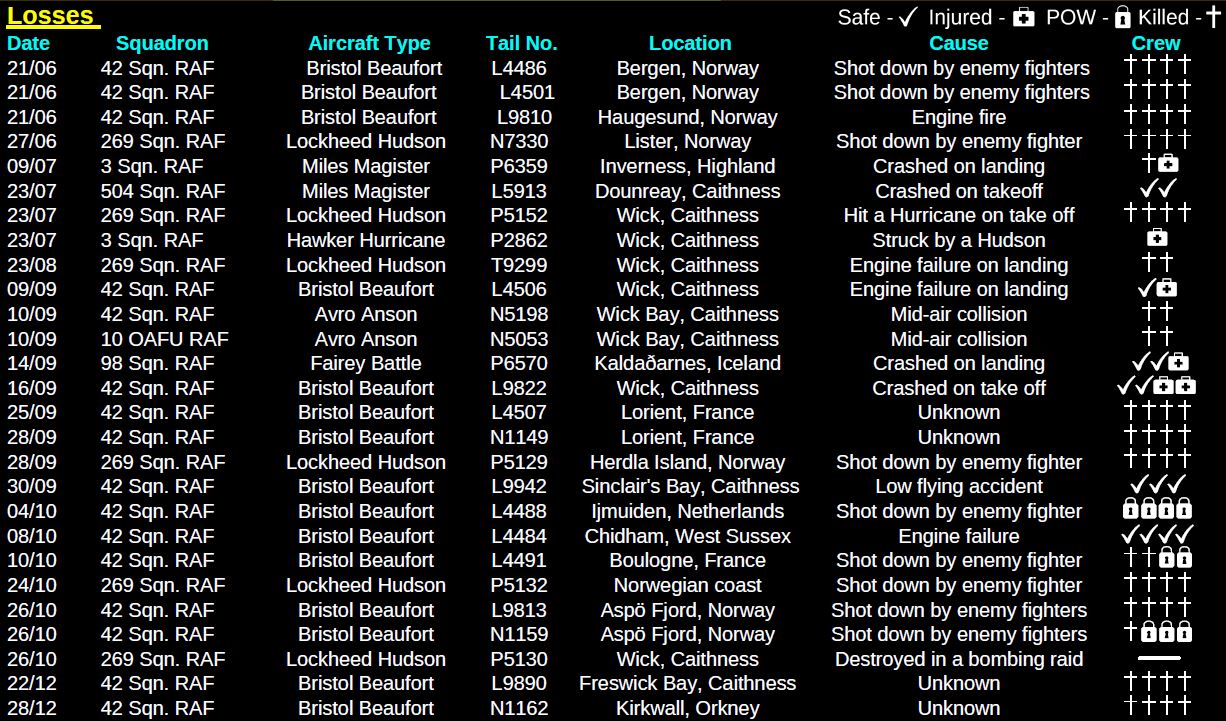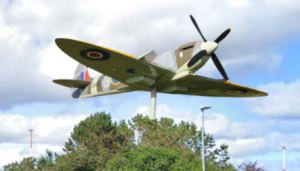Site 18. RAF Wick : April – December 1940
Air Operations – June to December
JUNE – The air station at Wick was transferred to the control of 18 Group Coastal Command and became a Sector Station, which saw the departure of 504 Squadron to nearby RAF Castletown and the arrival of 42 Squadron equipped with Bristol Beaufort torpedo bombers. On the 1st, three Hudsons of 269 Squadron attacked six merchant vessels, an oil tanker and oil storage tanks at Bergen Harbour.
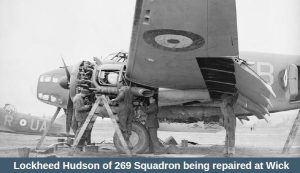
On the 11th, 269 Squadron, along with detachments from 22 and 233 Squadrons, bombed the battlecruiser Scharnhorst at Trondheim Fjord, dropping thirty-six 250lb (113kg) Armour Piercing bombs. Although the bombs failed to hit their primary target the squadron did score direct hits on the battlecruiser Gneisenau and heavy cruiser Admiral Hipper, as well as a supply ship. Six Hudsons attempted to attack the seaplane base at Stadlandet on the 13th but were unable to locate the target due to bad weather but did attack and sink a U-boat on the return journey. The following day four Hudsons bombed the harbour at Bergen causing considerable damage to warehouses and other structures. On the 21st, nine Beauforts from 42Squadron and six Hudsons from 269 Squadron bombed the Scharnhorst at Trondheim with Armour Piercing bombs, scoring three direct hits. The Scharnhorst had to return to Kiel for repairs after the attack where she remained out of action for the rest of the year. The final major attack of the month was carried out on the 25th against Bømoen Aerodrome, when nine Hudsons dropped 90 bombs on the airfield resulting in considerable damage.
JULY – The 5th saw the arrival of long-range unarmed Photo Reconnaissance Spitfires of 1 PRU Squadron. The Beauforts of 42 Squadron were grounded due to engine problems, however the Hudsons of 269 Squadron attacked and severely damaged a camp, ammunition dump and a bridge north of Bergen which was used for troop movements. The latter squadron was involved in 155 sorties during the month resulting in several merchant vessels being attacked and a German U-boat sunk. The Hudsons were engaged in a dogfight with several Dornier Do 18 flying-boats on the 23rd resulting in one enemy aircraft being shot down.
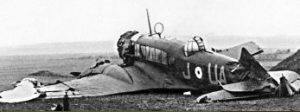
AUGUST – With the Battle of Britain now raging over the south of England, much of the Luftwaffe’s attention had turned away from the north of Scotland. The Beauforts of 42 Squadron were now declared fit for service and began laying sea mines across German shipping lanes in the North Sea. Sorties by the Hudsons of 269 Squadron had increased to 234 this month, and three German U-boats were attacked with one being sunk. August also saw the arrival of 98 Squadron equipped with the lumbering Fairey Battle, however the squadron only spent 45 days at Wick before transferring to RAF Kaldaðarnes in Iceland.
SEPTEMBER – Pressure on German shipping off Norway was kept up during the month with 269 Squadron flying 178 sorties against Axis shipping and submarines. Convoys bringing vital supplies to Britain had also increased and 269 Squadron flew a total of 78 convoy escort duties during September. A detachment of six Beauforts from 42 Squadron had transferred to RAF Thorney Island on the 26th and carried out several night-time mining sorties against the approaches to the Lorient U-boat pens.
OCTOBER – Operations at Wick were hampered by bad weather for much of the month but 269 Squadron still managed to carryout 154 anti-submarine and anti-shipping patrols as well as 56 convoy escort sorties. The detachment from 42 Squadron returned to Wick by the middle of the month and resumed strikes against Axis targets. On the 26th a Beaufort sank a naval transport ship off Aspö Fjord and managed to shoot down a German fighter. With the weather having improved it also mean that the Luftwaffe could resume operations, and on the 26th two Heinkel He 111’s bombed Wick airfield, damaging a hangar and destroying a Hudson of 269 Squadron.
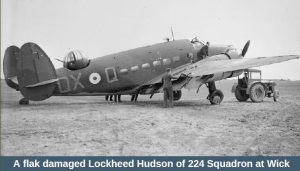
NOVEMBER – Bad weather curtailed most of 42 Squadron’s operations during the month, however 269 Squadron managed to fly172 anti-submarine and anti-shipping patrols as well as carrying out 48 convoy escort sorties. On the 15th three Hudsons attacked the Luftwaffe airfield at Sola in Norway with moderate results. This was the first month in the last twelve that none of the squadrons based at Wick had lost any aircraft or aircrew.
DECEMBER – Patrols and sorties against Axis shipping continued throughout December. On the 18th, 20th and 22nd, Hudsons of 269 Squadron and Beauforts of 42 Squadron attacked the ski resort of Finse in Norway which was being used for skiing holidays by a large number of German officers and Norwegian collaborators, known as Quislings. The objective of the attacks was to destroy the rail link to the resort and to kill as many officers and Quislings as possible. The plan was deemed a success with the hotel, railway station, railway line and snow sheds all receiving direct hits. Two snow ploughs were also destroyed resulting in the railway line to the resort being blocked for several weeks.
